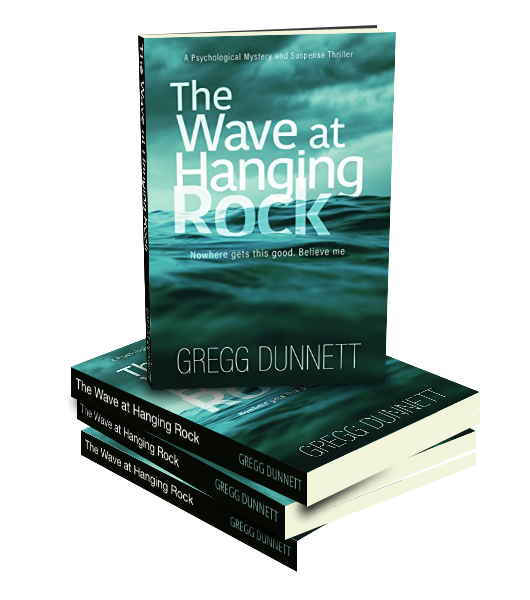
As I write these words The Wave at Hanging Rock has over three hundred reviews on Amazon.co.uk. They’re mostly positive, but among them a few people have expressed frustration that they didn’t like, or didn’t understand the ending. And a few more have emailed me or contacted me on facebook to say the same thing.
The ending is certainly a shock, and it’s certainly possible to interpret it in different ways. And while that’s what I set out to achieve, I didn’t want to leave readers feeling frustrated, or that the suddenness of the ending would spoil the overall experience of reading the book
And so I’ve decided to put something online that explains how I intended it to be understood.
Just before I do, I should also warn: the following contains total spoilers. If you’re looking to read the book and haven’t done so already, don’t read any further or you’ll spoil the surprise…
The set up:
Much of the book is narrated by Jesse, who describes how he comes to the UK as a young teenager and attaches himself to the confident and popular John. And Jesse describes his coming-of-age, where he lives an almost semi-wild existence, with John always leading him and Darren into adventures. But Jesse implies early on that something isn’t right about John – his willingness to inflict pain on animals for example, which is intended to be seen as the classic early warning sign of sociopathic personality. And Jesse ultimately describes how John develops into a killer, murdering Jim.
The intention is that the reader (while perhaps not liking Jesse much, and maybe even pitying him a little) believes Jesse, and maybe even sees him as one of John’s early victims.
When Natalie and Dave finally track Jesse down, he also convinces them of the danger John poses to them. They believe that John murdered Jim, and that he will kill again unless they act first.
But when they do act – and too late to do anything about it – they discover that Jesse lied to them all along. John tells them (and also the reader) that it was Jesse who killed Jim. The intention is that this also implies that we should doubt everything that Jesse has told us. When Jesse is describing John’s actions, he is really describing his own actions. So it was (probably) Jesse who pushed the three boys to experiment with cutting crabs up in a way to deliberately cause them pain. It was probably Jesse who killed Jim. I say ‘probably’ because we, as readers, cannot know for sure. It is still possible that John is lying, even as he lays dying.
But then in the epilogue we see enough to finally be sure. We see Jesse dropping the act. We see someone twisted and nasty. Someone who uses people, and manipulates them. And this is intended to confirm to the reader that what they have been reading all along is the lies Jesse tells as a master manipulator, pushing Natalie and Dave to murder John (because John has put in place security to keep Jesse from getting near him).
So my interpretation of the book is that John was telling the truth, and Jesse was the guilty party all along.
But what about right at the end? What happened to Darren? (And who is the ‘new’ Darren?)
Darren talks in the book about running a bar in Indonesia, but he’s a dreamer and in reality would never have the get-up-and-go to actually make his dream happen. Yet this is where the epilogue takes place. But the Darren we see there clearly isn’t the same person we see growing up with Jesse. I tried to imply that Jesse has befriended/employed a local man, and calls him Darren – probably because the real Darren is dead, and because Jesse – in his rather twisted way – misses him. But that’s all implied rather than stated, because I wanted to leave readers with something to think about, (and I also rather liked Darren and didn’t want to categorically kill him off!) My final hope is that seeing Jesse in this new environment, readers will realise his unsavory tendencies are increasing rather than subsiding. I don’t think it’s going to work out too good for the ‘new’ Darren…
I hope this helps to explain my thinking about the ending. If you’re still confused, feel free to email me (you won’t be the first!). And if you have a different interpretation, I’d love to hear that too!
Gregg Dunnett
February 2017
Now, what are you reading next?

And do you fancy something free? A killer is leaving notes on London’s park benches, confessing to their lifetime of crimes.
A detective has the chance to solve cases that have baffled her colleagues for decades.
But only if she can work out who he is, before he gets to her.
Because – in a story where not everything is what it seems – not even murder is black and white.
You can get Killing Kind for free – just click here or the button below!
